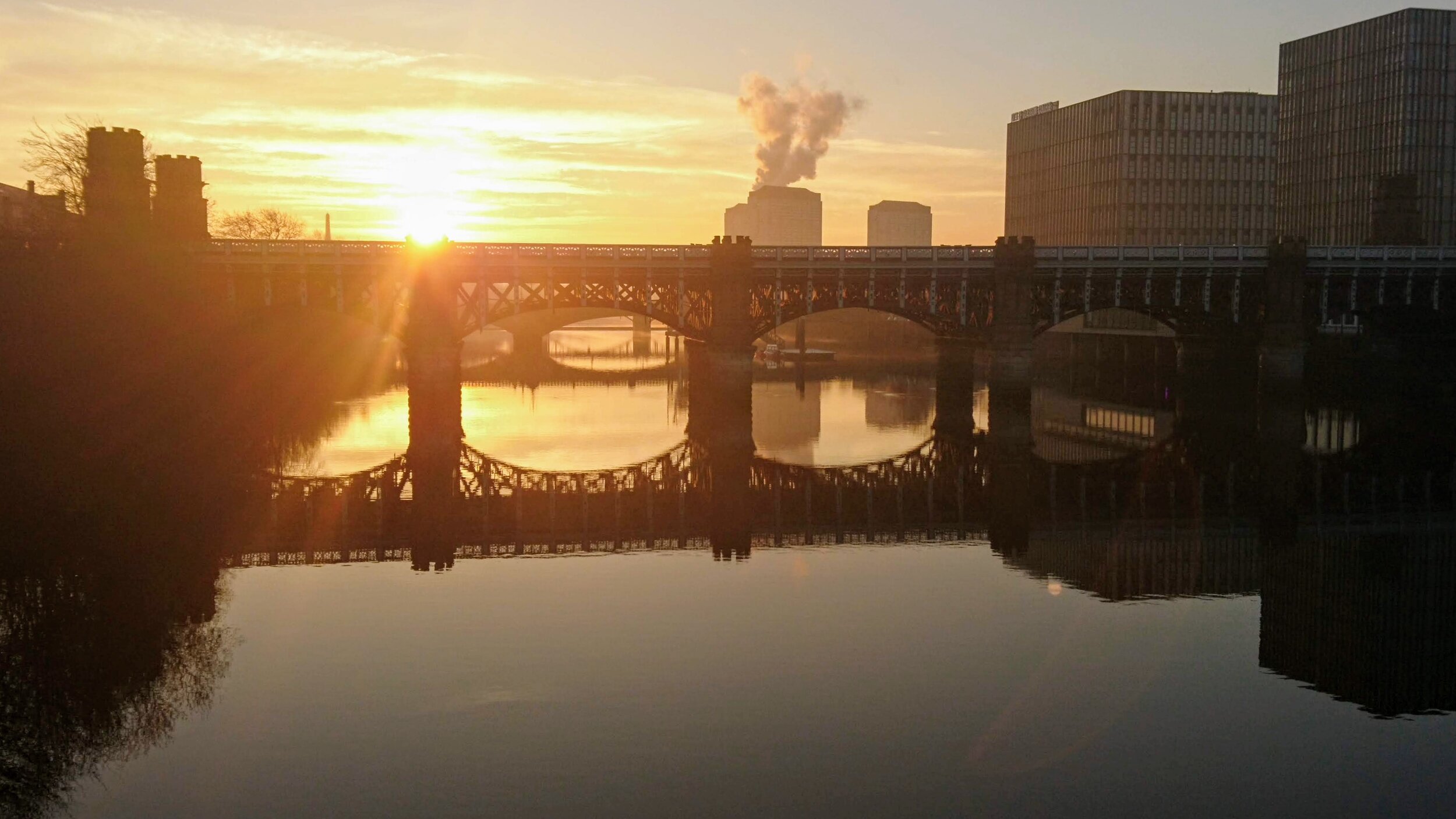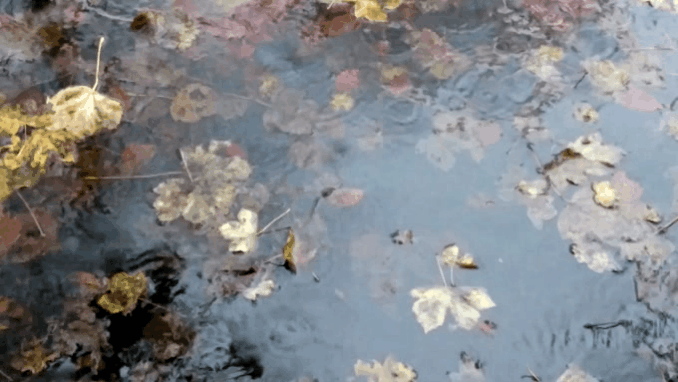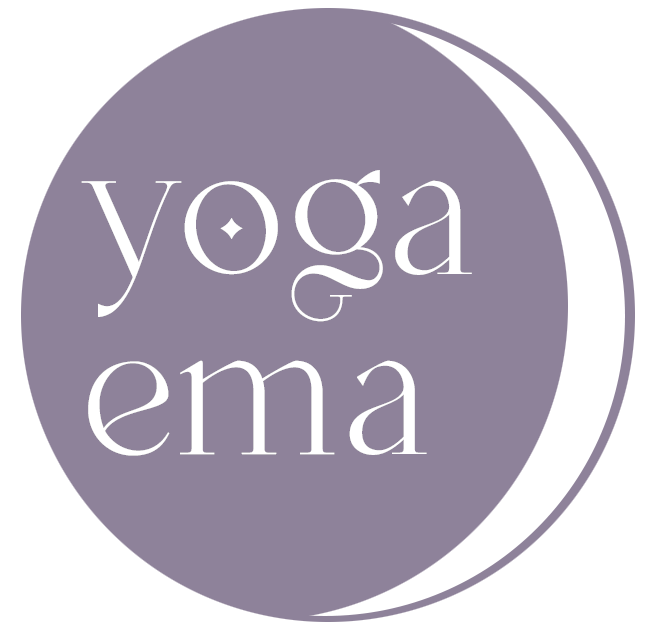Nothing is Special
The other day I was taking a shower at twenty past five in the morning before going to early mysore class and thinking, ‘Why don't I do this more often?’
I realised that it's still hard for me to make it to morning mysore on a regular basis because it's still kind of a big deal. Deep down I still feel like going to the 6am class (the traditional way to practise) proves your extraordinary dedication and self-mastery that you can get up with the dawn chorus and be finished your practice as everyone else is only leaving for work. And this is the problem – because I think of it as a feat of tapas, spiritual discipline, I can't make it a part of my regular routine.
I suppose it’s not ‘normal’ to get up before six o’clock or at least at the moment it isn’t normal for me - and yet how easily I could change that habit if I reshaped my understanding of it as something commonplace and unremarkable.
My inability to make it to morning mysore more than once a week started me thinking about the ideas about things that we have, and how limiting they can be to doing the things we’d love to do, and seeing the world as it really is.

To take another example from practice (since, after all isn’t that why we do what we do - to learn lessons which we can take off the mat?) last year I was learning to drop back into wheel from standing, and practising with beautiful teacher Scott Johnson during his visit to our studio. As I started to puff my chest up and wrangle my body into a backbendy shape clearly he could see the tension and angst all over my body, he stopped me and shrugged - “It's just dropping back”.
He was right - there were so many other postures I didn’t care so much about, yet I waited for this one, and I worked, I concentrated, I huffed and puffed. Why? While bending forward and touching my toes didn’t get me so worked up, this was a dream pose that I wanted to get. And it’s all because of notions - ideas of it as something beautiful, romantic and mysterious - notions that really had nothing to do with the actual physical actions of curling the spine back to get into urdhva dhanurasana.
👍 I AM WHAT I LIKE 👍
The thing is, everything we do is hung up with such notions. We can’t help but label everything around us as ‘good’ or ‘bad’ - it’s an evolutionary instinct, a survival tool that kept us away from tigers and helped us forage for food. Even before our prefrontal cortex can analyse and classify things we encounter as dangerous or helpful, our hippocampus stamps an initial assessment on them so that we can either make a speedy getaway or stay chill - and we process everything in the world in this way - what’s going to harm us, what will help us get ahead.
Our sophisticated brains have come a long way from thinking ‘snake- bad! stick - ok!’ to deciding which vegan restaurant does the best cashew cheesecake, which political party will mess things up the least, which people in the office we want to chat to and who is a bore and best avoided. We have subtle and complex ideas about what is valid and what is odious - based not only on our own past history, family values and prejudices, but also influenced, maybe more than we realise, by cultural norms and trends, all of which are constantly either being confirmed and cemented, or morphing and moving on, according to what’s going on around us.
As much as we’d like to think we have free will - it’s these preferences which control almost everything we do.
In Yoga we call them raga, attachment, and dvesha, aversion, and a large part of our practice aims at identifying these prejudices and learning to reduce their influence over us so that we can be free.
The problem is that though these judgements may serve us in navigating the complex world out there, the value or disfavour we place on something is not innate - it’s created by us in our imaginations, and it means that we limit our view of the world and how we can interact with it. It creates a skewed view because not only are we more drawn to the things we like and ignore the things we don’t, but our brains actually filter information on the basis of these parameters.
Our brains are hard-wired for pattern recognition, where dopamine is triggered when we believe we are proven right, so much so that we often notice patterns where there are none.
Not only that, our brains also have a negativity bias, where negative information is detected more quickly, and negative experiences are stored carefully to prevent the mistake happening again. As Dr Rick Hansen points out, your brain is like Velcro for negative experiences and Teflon for positive ones - even though most of your experiences are probably neutral or positive.
It’s clear that our biases are ways for the brain to organise the huge mass of information and stuff out there. The problem is, when we see things through our prisms of raga and dvesha, we reduce a 3-dimensional, multifaceted and complex object, or person, or yoga posture for that matter, and flatten it down to our ideas about it.
I see it in the same way that quantum physics talks about the uncertainty principle - the world is scintillating with endless potential, until you measure it, and then it is reduced to your observation of it.
Now, since there is no longer danger of us being eaten by a bear or not being able to find food for supper, our preferences actually do more to hinder our progress and limit our experience of everyday life.
NOTHING IS AS GOOD OR AS BAD AS IT SEEMS
Recently I’ve been trying out a radical practice to counterbalance this rollercoaster of judgement and delusion - a very simple, and as it turns out, remarkably comforting mantra: Nothing is Special.
With a slight change in perspective I’m reminding myself that my experience of things as pleasant or unpleasant is a decision - and it’s these judgements which create the contraction of my perception of each thing. This contraction is what makes things ‘special’ - either in a good way or a bad way. But at closer inspection, I realise that things aren’t so special, and that it is extremely liberating and reassuring to see.
MAKING THE SPECIAL UNSPECIAL
I’ll come back to my example of yoga practice. Whether it’s dropping back or lifting the feet smoothly up in headstand (my other nemesis) or balancing in crow pose or even stepping on the mat in the first place, our apprehensions and fears can stop our practice in our tracks. When I’m teaching I often steal a cue I heard the excellent Alice Gray use maybe in the first class of hers I ever went to: ‘and without thinking about it, step the foot forward..’ Overthinking is an awesome way to sabotage anything you’re doing - and the problem is we see the action as something special.
Shunryu Suzuki says in Zen Mind Beginners Mind, “before you attain it it is something wonderful, after you attain it it is nothing special” - as with all things, the closer you look at it, the more you realise it’s not such a big deal. And the problem with such glorification is that you waste so much energy on the overthinking that you have none left to actually do the thing (like me with my puffy backbends).
In actual fact if you want to master something, you have to make it normal. When we put the body into the strange poses of the yoga practice, we then deepen the breath, we try to still the mind, so that the nervous system can adjust to this peculiar new physical configuration. In this way we build resilience in the body and mind.
In the same way when we confront any sort of difficulty in life, the more we think of it as something terrible and unsurmountable, the more we stress out and it really is so hard. But with practice we start to see that the negativity and the difficulty is in our perception of the thing, and we can just get on with it.
Now this is not me being all self-helpy and wellnessy about life, ALL CHALLENGES ARE AN OPPORTUNITY! YOU CAN DO IT IF YOU JUST BELIEVE IN YOURSELF! INSERT CHEESY GRIN HERE!
I am not advocating candy-coating struggles, as after all a positive slant on life is also artificial.
While I was preparing this article I attended, and actually officiated, the wedding of dear friends of mine. The occasion was incredibly beautiful, filled with love, generosity, good luck (🌦>☀️!) and basically good vibes. I thought to myself - how to reconcile this amazing experience which just brought us so much joy with the understanding that Nothing is Special? Wasn’t this something incredibly special??
In fact, the more I contemplated this, the more my joy spread and transformed itself.
If this wedding day, these people, this sunshine, that love, isn’t special, then it means that the potential for all of this beauty must exist everywhere. If specialness and judgements are a contraction, then removing these limits releases the qualities to spread out to everything and everyone everywhere. Nothing is innately difficult, nothing is innately beautiful - but everything has the innate potential to be all of these things, depending on the circumstances and the way that you approach it.
In this way, nothing is special - everything is everything.
“ How wondrous this is, how mysterious! Carrying logs, drawing water!” P’ang Chu-Shih
If the special is in fact unspecial, then that means that the unspecial is absolutely special. When we make one thing special, it draws all of our attention and we stop noticing the other things around. But if you remove specialness, suddenly your awareness becomes vast and all-encompassing. In this way a blade of grass can be a miracle,the flickering of a candle captivating, the flavour of the breath as it passes over the tongue - more delectable than the taste of any haute cuisine.
In his lectures on the Lotus Sutra, Michael Stone draws our attention to the fact that there is no preference, no specialness in nature. “The rain lands on everything equally. The rain doesn’t decide, oh, I’m going to land on the roof but not the dog shit - I’m going to land on the snow but not on those leaves composting over there.. The rain lands on everything equally. And maybe our awareness and maybe you could even say Kindness, could work this way too.”
As yogis, if ahimsa, compassion, is our first guiding principle, then we must always ensure that it is not limited by our judgements or our preferences - like the rain, our compassion must land on everyone and on all things equally.

EVERYTHING IS EVERYTHING, EVERYTHING IS NOTHING
“If prajna (wisdom) is to see that “form is void”, karuna (compassion) is to see that “the void is form”. Alan Watts - The Way of Zen
The most remarkable (or rather not, haha!) thing that happens when you realise that nothing is special, and start to look at things much more closely, you start to see the stuffiness of stuff.
The Buddhists refer to it as suchness (tathatā) - it’s an awkward descriptor, and purposefully so. There is no real word that can describe the suchness of being, as it necessarily lies beyond the delineating, contracting, symbolic nature of linguistic thought.
Wouldn’t it be amazing to see past our hangups, our neuroses, our memories, our peculiar notions, our judgements, our comparisons, and see things as they really are? To have an unscreened, undivided, unmitigated experience of the world, to be truly alive and present to each moment and experience the world absolutely TO THE MAX?
If that all seems a bit much and you’re not into it, take this at least: nothing has to be as extreme as we suffer it to be. We don’t have to sweat the small stuff, we don’t even have to sweat the big stuff. Our reactions to things are entirely under our control, and so we can take our lives into our own hands and do with them exactly what we will.

